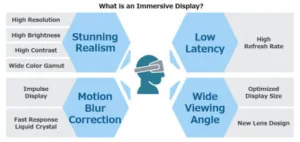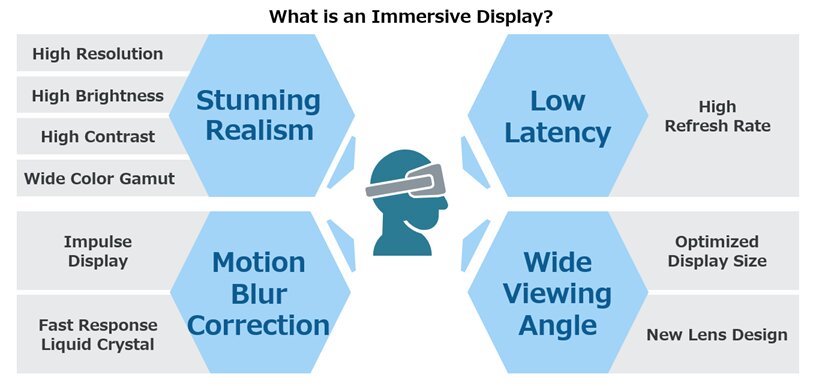Meta introduced its “Meta Quest Pro” high-end mixed reality device at the Meta Connect event this month. It is expected to be available for purchase in October 25th for $1499.99. According to Meta, they believe “VR devices will help usher in the next computing platform – becoming as ubiquitous as laptops and tablets are today- and that people will use them in their everyday lives to access the metaverse”.

Apple’s CEO Tim Cook, in his interview in Europe with Bright publications in October said,
“AR is a profound technology that will affect everything. …We are really going to look back and think about how we once lived without AR”.
As it can be seen there is a surge in interests and investments in AR/VR market due to the recent focus by industry leading companies such as Meta, Microsoft, Apple and others. To make it a reality, there is a real need for many technological developments and multiple challenges need to be resolved. Display technology developments are critical for AR/VR/MR devices.
The Meta Quest Pro uses pancake optics which reduces the depth of optical module by 40% while providing clear and sharp visuals, according to Meta. Two LCD displays with local dimming and quantum dot technology provide richer and more vivid color. With the use of miniLED backlights (500 individual LEDs) the display has 75% more contrast compared to the MetaQuest 2. The Meta Quest Pro also has 37% more pixels per inch (PPI) and 10% greater pixels per degree than Meta Quest 2, making everything from reading text to playing games look better.
The company also reported 25% improvements in full-field visual sharpness in the center view, 50% improvements in the peripheral region, and 1.3X larger color gamut than Meta Quest 2. Meta Quest Pro uses dual LCDs (2.48”), with miniLED backlight and Quantum dot technology, 1800 x 1920 resolution per eye and 1200 PPI pixel density. This is the first time Meta has introduced a QD and MiniLED dual LCD-based device.
Quantum Dot & MiniLED technology Empowers LCD
As it has been seen in applications such as TV, IT, Tablets and other products, by the use of muti-zone blinking backlights, miniLED with QD (Quantum Dots) has enabled LCD to have higher brightness, very high contrast, excellent HDR, thin form-factor, superior power efficiency and display performance close to OLED. MiniLED-based products with QDs with higher picture quality, more competitive prices, higher product availability and brands focus (for product differentiation) have resulted in higher shipment growth for large LCD products for TV, IT, gaming and other products in the last few years.
Can QD and MiniLED also empower LCD for AR/VR /MR devices? Meta being the leader in terms of shipments in VR market, more brands may follow Meta. The cost of the combination of miniLED and QD can be high, limiting its use only to high end enterprise devices especially in the near term. The benefit of having QD and miniLED to improve visual performance can still help to increase adoption rates.
QD technology can help to increase color gamut, give higher brightness, increase power efficiency and improve speed. Immersive AR/VR/MR displays can use QD to improve visual performance. Nanosys is the world’s leading pioneer in the commercial application of Quantum Dot technology. According to Jeff Yurek, VP of Marketing at Nanosys,
“Speed is an underappreciated advantage for quantum dots in displays of all types. It turns out the speed of the backlight really matters. For optimal image quality, you really want the backlight and the LCD to be in perfect sync. Quantum dots enable this with ultra-fast, nanosecond response times. But, with slower phosphors like KSF, you are faced with a choice: either turn the backlight on before you open the LCD shutter, which exacerbates haloing artifacts and increases lag time, or, turn the backlight on in sync with the LCD shutter and live with cyan instead of white while the red warms up. These artifacts are visible even at 24p but when you start talking about refresh rates over 90hz and pairing that with hundreds or thousands of miniLED zones, speed becomes critical”.
(SD)
Part 2 will be published tomorrow. The two parts will count as only one if you have a free subscription to Display Daily.


